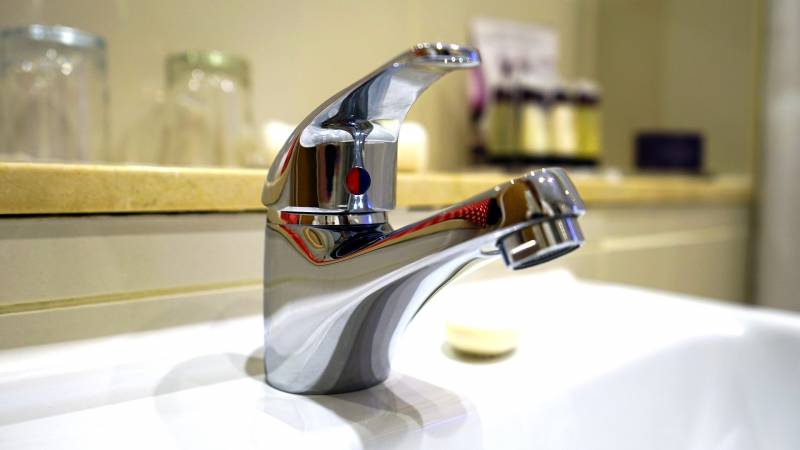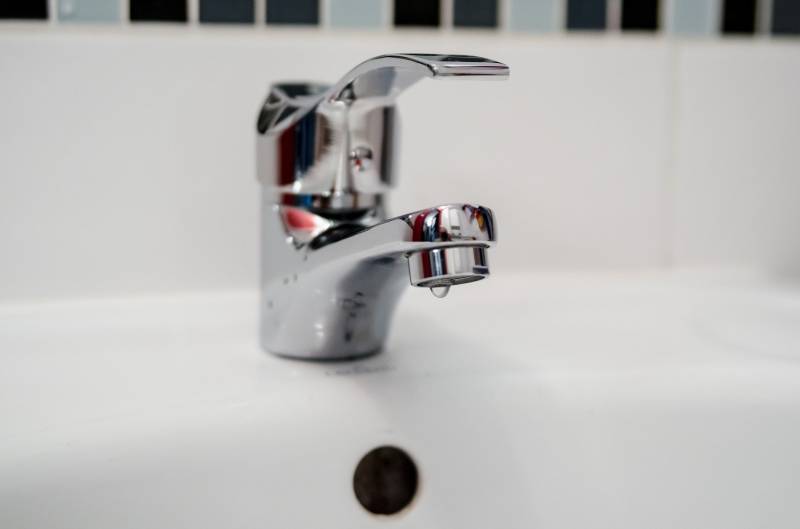Table of Contents
Did you know that a small leaky faucet is capable of oozing out hundreds of gallons of water within a year? This wastage is harmful not only to your home but also to the ecosystem.
This is why it is best to ensure that all your faucets are of good quality and remain in excellent working conditions.

A faulty faucet cartridge is pretty easy to detect as it would not perform as it should. However, people often confuse faucet problems with water line breaks. If you’re unsure if your faucet is truly bad, here is a detailed article on the symptoms of a defective faucet cartridge.
Signs That Your Faucet Cartridge Is Faulty
The lifespan of most top-quality faucet cartridges is between 10 – 15 years, while a lesser quality faucet should last for a minimum of 5 years.
So, as you can see, they are quite durable and shouldn’t develop issues within a few months or years of using them. However, if you think your faucet cartridge is bad, here are a few signs to watch out for.
Water Damage Or Dripping
This is the most common symptom of a defective faucet cartridge, but it also the easiest to confuse. The leak may range from tiny drops that can barely fill a cup to massive spills that may flood the floors of your room.
In addition, the leak is easy to confuse because it may not only erupt from the spout. So, to diagnose a faulty faucet cartridge, you need to learn about the three major locations for leaks.
Spout Leak
This is the most visible place for a faucet leak. If you notice the spout of your faucet dripping water even when the handles are turned off, then it is most likely defective. Also, if you observe that you have to close the faucet tighter to turn it off completely, there is an issue with the faucet cartridge.
Another possible symptom of a spout leak is having to position a faucet handle in a particular place to turn it off fully. Here is a simple test to detect a leaky spout. First, dry the sink with a napkin, then place a dry towel over the drain opening.
Alternatively, a cup can be placed below the faucet spout. Leave for about 5 minutes. If you notice the paper towel is wet or the cup is slightly filled, then your faucet cartridge is bad.
Though the drip may appear minimal at first, it will worsen over time. It will also increase your water bill and cause brown stains on the sink. Therefore, it is best to have it repaired immediately.
Faucet Base Leak
The base is where the faucet spout meets the sink. Leakage from the base is not apparent as most users are constantly spraying water around the faucet base and sink. However, if you observe a puddle around the sink deck, you may have a leak in this spot.
This type of leak only happens while the faucet is active, and you can test for it with the following steps. First, dry up the sink and sink deck with a napkin. Next, open the faucets by turning the handle(s), and watch out for water trickling around the faucet base.
If you can observe water in the area, it means the internal O-ring of the faucet is dried or cracked. Therefore, the faucet cartridge is bad.
The O-ring is a part of the faucet cartridge and is meant to regulate the flow of water. Once the part is replaced, the faucet should work perfectly.
Under Sink Leak
This is the most challenging leak to detect because most people rarely check under their sink. It is also the most damaging as the water cannot drain itself, unlike the spout leaks and faucet base leaks.
When the leaked water seeps to the floor, the possible damages may include stained floors, slippery floors, and extensive damages caused by water seeping through the flooring material.
As you can see, this type of leak is also a danger to your health as you can trip over the slippery surfaces produced. To detect this type of leak before it escalates, carry out the following. First, dry the entire sink and also the compartment below the sink.

Then, run the water for a few minutes and patiently observe for the leak’s exact source. If you’re unable to detect any seeping, set some paper towels on the floor and leave overnight. The following morning, check for water marks on the towels.
A wet towel could imply that the faucet is worn. The problem can be corrected by tightening the fittings or completely replacing the faucet.
Difficulty In Adjusting Water Temperature
Have you been experiencing problems with the wrong temperature of the water coming out of your faucet? Then, you have valid reasons for suspecting the condition of your faucet cartridge.
The primary function of a cartridge is to control the flow of water from the faucets. So, if it doesn’t deliver the proper water temperature from the sprout, it is defective.
Bad cartridges cause inconsistent water temperatures. In most faucets, the right handle controls the cold water, while the left controls the hot water, but the cartridge is the one that regulates which temperature of the water is coming out.
The situation can be pretty annoying and possibly dangerous. Imagine showering with comfortable, warm water that suddenly turns scalding hot – or trying to draw cool water into a drinking glass, only to find warm water coming out. All these unpleasant situations are possible with a malfunctioning cartridge.
Checking For Inconsistent Water Temperature
To test for inconsistent water temperature, carry out the following experiment. Run cold water into a bowl for a few minutes. Check if the temperature is right.
If it is lukewarm, it means the water has inappropriately blended with hot water, and the faucet cartridge is broken. If the water is at the perfect temperature, continue with the following steps.
Run only hot water into a bowl for a few minutes. Next, move to another faucet in the house and run either hot or cold water. Return to the initial tap and check if hot water is still running.
All the taps would be running at the desired temperature for a fully functional faucet despite the separate demands in different house locations. However, a faulty faucet would be affected and either start to run lukewarm water in the first tap or ultimately fail and supply cold water.
Most homes have a central water system, and all faucets share the same source of hot water and cold water. So, to prevent the water demand of one location in the house from affecting other places, pressure-balanced valves and thermostatic valves are typically installed.
Unfortunately, if these are in place and you still have inconsistent water temperature, your faucet cartridge is flawed.
Conclusion
It’s relatively easy to spot a defective faucet cartridge as its function would be significantly diminished. Once you have confirmed the condition of your faucet cartridge, the solution would be obvious.
In most cases, a replacement would be necessary. However, because the repair would require special tools, you may have to employ the services of a plumber.
